Museo de Intramuros: Preserving our collective memory

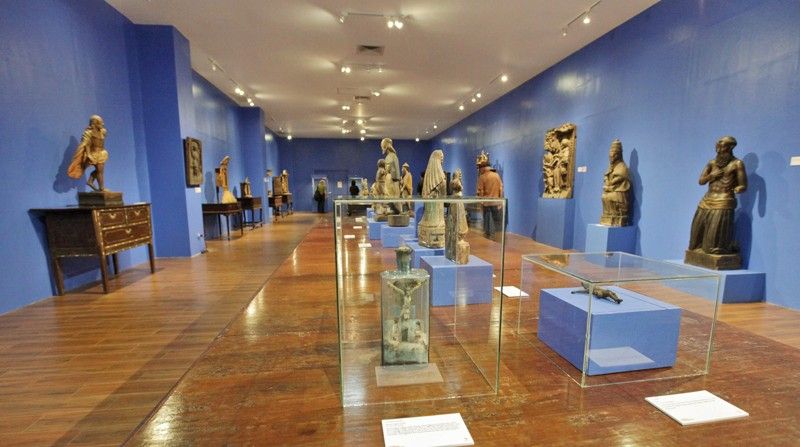
This is our history and it must be told,” announced Secretary Bernadette Romulo-Puyat of the Department of Tourism (DOT) during the opening of Museo de Intramuros last April 29.
The Intramuros Administration celebrates its 40th year by launching the Museo de Intramuros, an ecclesiastical museum housing the Intramuros Administration’s vast collection of religious and colonial art. Located within the San Ignacio Church, this museum breathes new life to the renovated structure.
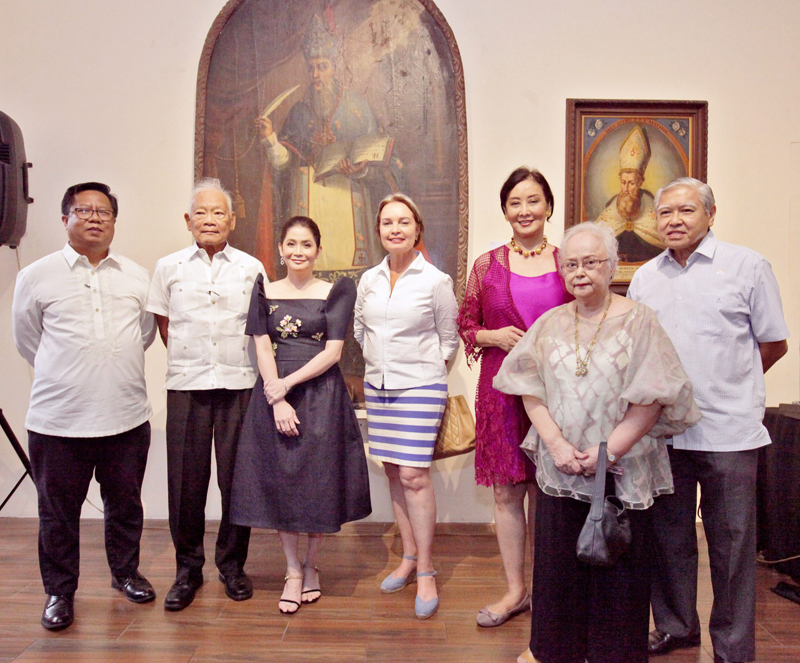
Guiller Asido, administrator of the Intramuros Administration; Dr. Jaime Laya, first administrator of the Intramuros Administration; Tourism Secretary Bernadette Romulo-Puyat; Margie Moran, Cultural Center of the Philippines (CC P) chairperson; Gemma Cruz-Araneta, former Tourism Secretary; Dr. Esperanza Gatbonton and Jimmy Capistrano, former Intramuros Administration officers.
Originally constructed in 1878 by Jesuit priests, the San Ignacio Church was destroyed during the Battle of Manila in 1945. Since then, the church has gone through multiple archeological excavations and efforts to conserve what has been left by the war. As a structure, the San Ignacio Church has previously been used as an office building and more recently, as an exhibition space during last year’s Manila Biennale. As of today, the church-museum now hosts five ongoing exhibitions, displaying paintings, wooden sculptures, and religious artifacts.
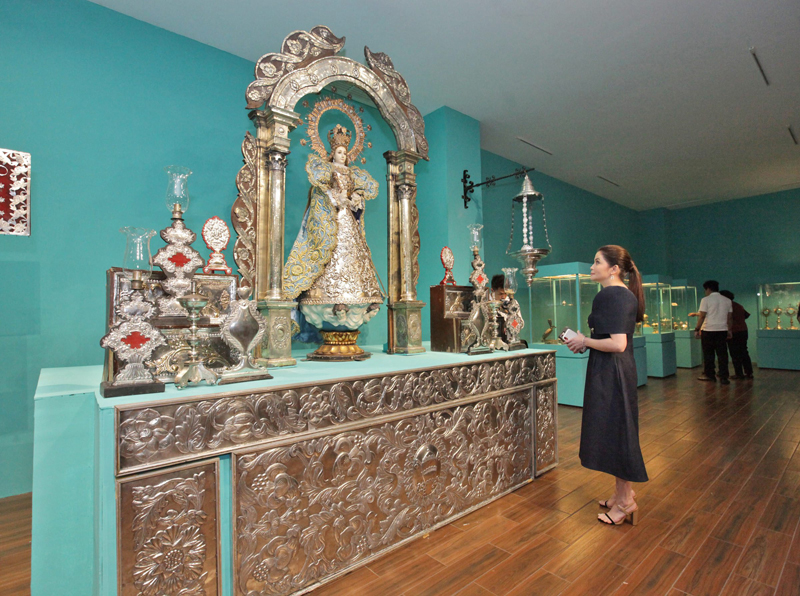
Sec. Romulo-Puyat says, “Intramuros is a powerful space, one that holds personal memories and one that has shaped our collective memory as a nation.”
The museum’s curatorial team was composed of a group of professors, artists, and authors: Dr. Esperanza Gatbonton, Gino Lopez Gonzales, Dr. Cecilia Sta. Maria de la Paz, Santiago Albano Pilar, and Martin Imperial Tinio Jr. Both Dr. Gatbonton and Tinio were involved in the reconstruction and redevelopment of Intramuros in the late 1970s and early 1980s.
Atty. Guiller Asido, administrator of Intramuros Administration, says that Sec. Romulo-Puyat played a major role in their decision to exhibit the Intramuros Administration’s collection. He recollects the memory of her first visit to their office, saying that she “always asked the tough questions and motivated us all to go the extra mile in providing public service.” It was during her visit that she posed this question to the Intramuros Administration: Why are we not exhibiting the collection and showing it to the public?
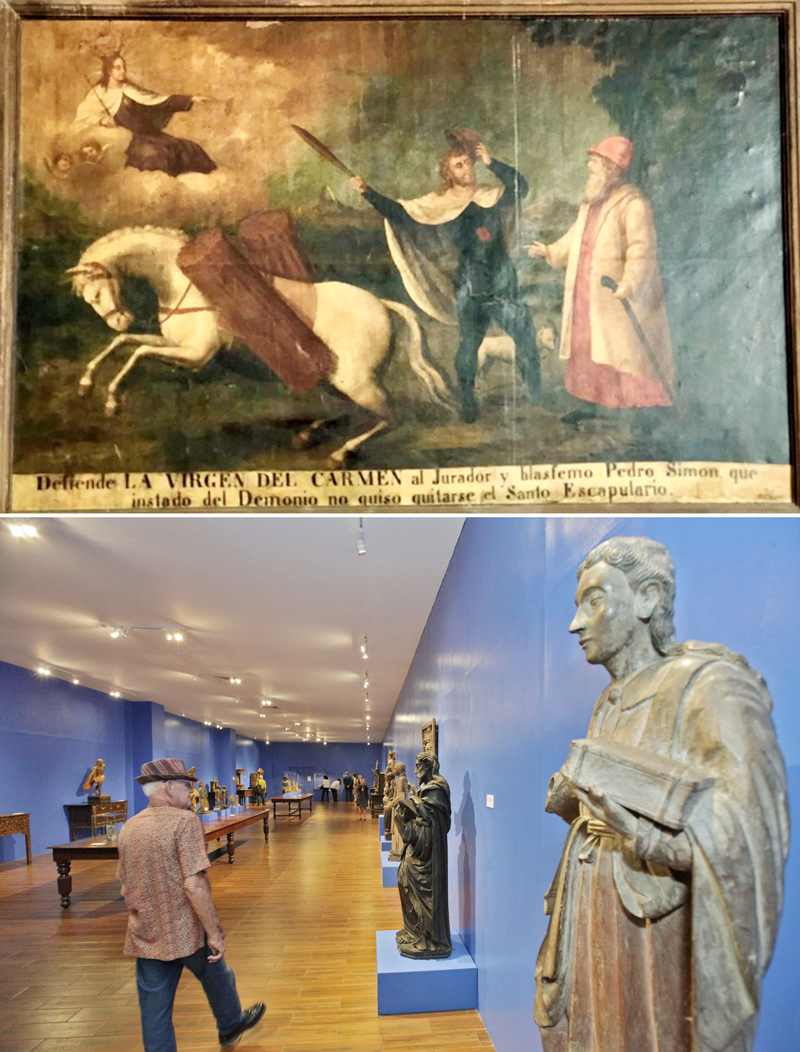
Museo de Intramuros, an ecclesiastical museum, houses the Intramuros Administration’s vast collection of religious and colonial art.
During her speech, Sec. Romulo-Puyat read an excerpt from Dr. Gatbonton’s writings on Philippine religious art: “The collection (of the Intramuros Administration) affords the viewer a panorama of the various styles and enables him to compare them with the artifacts done abroad in the same medium. We Filipinos have always tended to accept that we were the passive receiver of artistic stimuli from abroad. This collection proves that the Philippines was as much a giver.” The Museo de Intramuros depicts Filipino artistry amid colonial forces and evangelization, approaching strange ideas through a Filipino lens rather than blind assimilation.
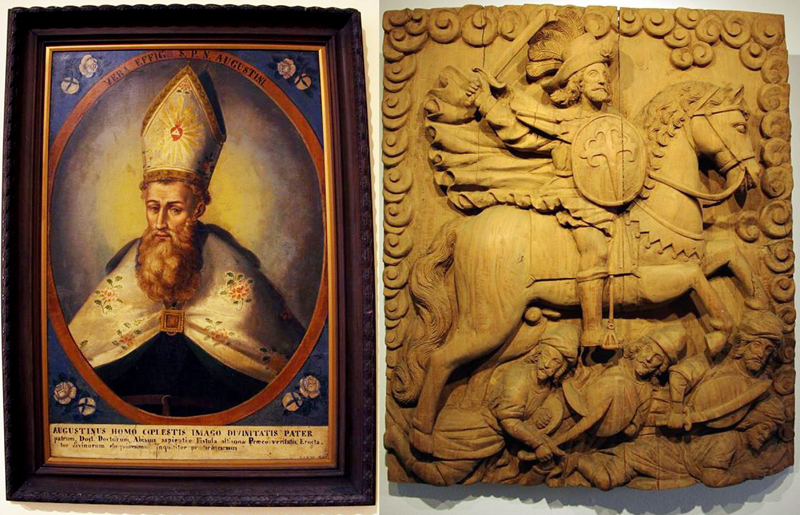
Atty. Asido describes the exhibition as one that “explores the Filipino psyche as it is introduced to a new religion and culture,” and highlights the “perspective of the Filipinos” and Philippine interpretations of religious saints and figures. Central to the exhibition is an understanding of the Filipino conception of godhood as tied to pre-colonial visual familiarities of the anito, with carvers appropriating their technique into the creation of “naïve” or “unschooled” depictions of divinity.
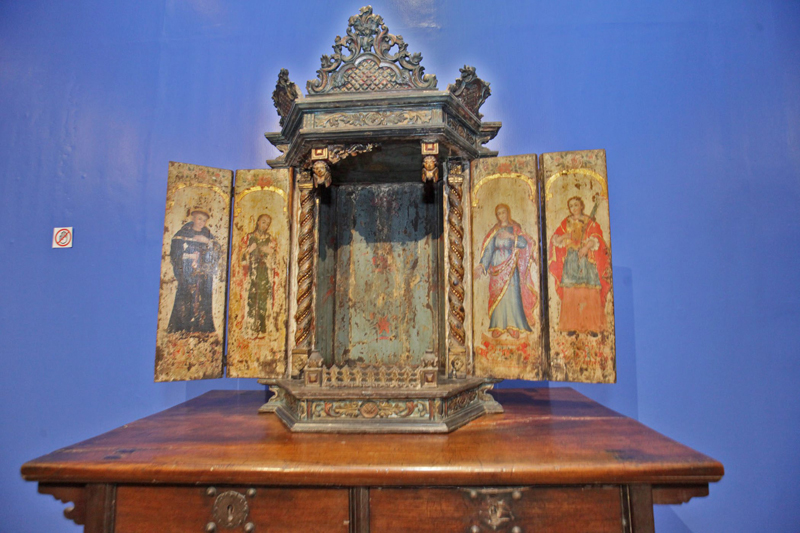
An altarpiece containing colonial paintings of saints and religious figures
While the museum is now open to the public, Atty. Asido remarked that “the program content is a work in progress.” Currently, only 30 percent of the entire Intramuros Administration’s collection is on display at the Museo de Intramuros. They hope to change out the exhibitions every six months to be able to show the complexity of their collection. In the meantime, Dr. Gatbonton says that they must focus on the development of infrastructure to hold the valuable collection, and the training of docents.
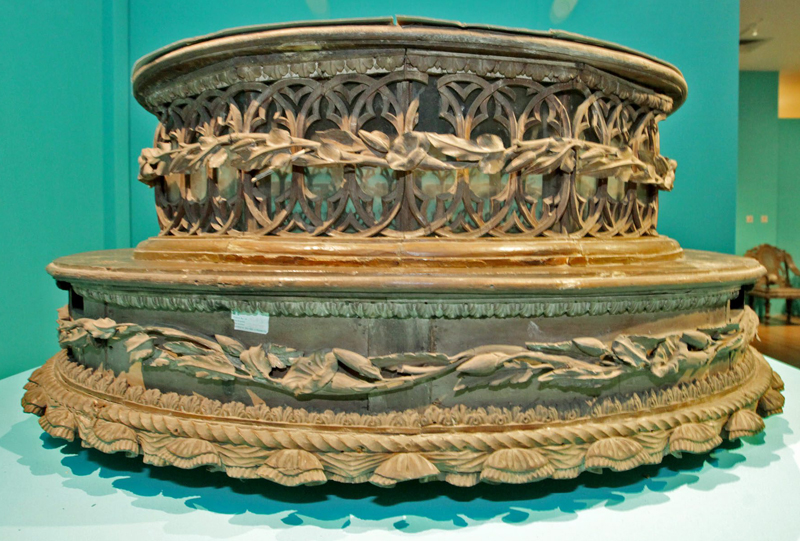
An intricately carved woven platform used for santos
Sec. Romulo-Puyat is hopeful for the impact Museo de Intramuros may contribute to more complex perceptions of Philippine arts, culture, and heritage. She says, “Intramuros is a powerful space, one that holds personal memories and one that has shaped our collective memory as a nation. This is our history and it must be told. Here, local and international tourists have the avenue to hear our stories when they visit Museo de Intramuros. They may also learn that exploring the walled city is not only a way to traverse our history, but also a glimpse into our creative past and its potential for the future.”



















